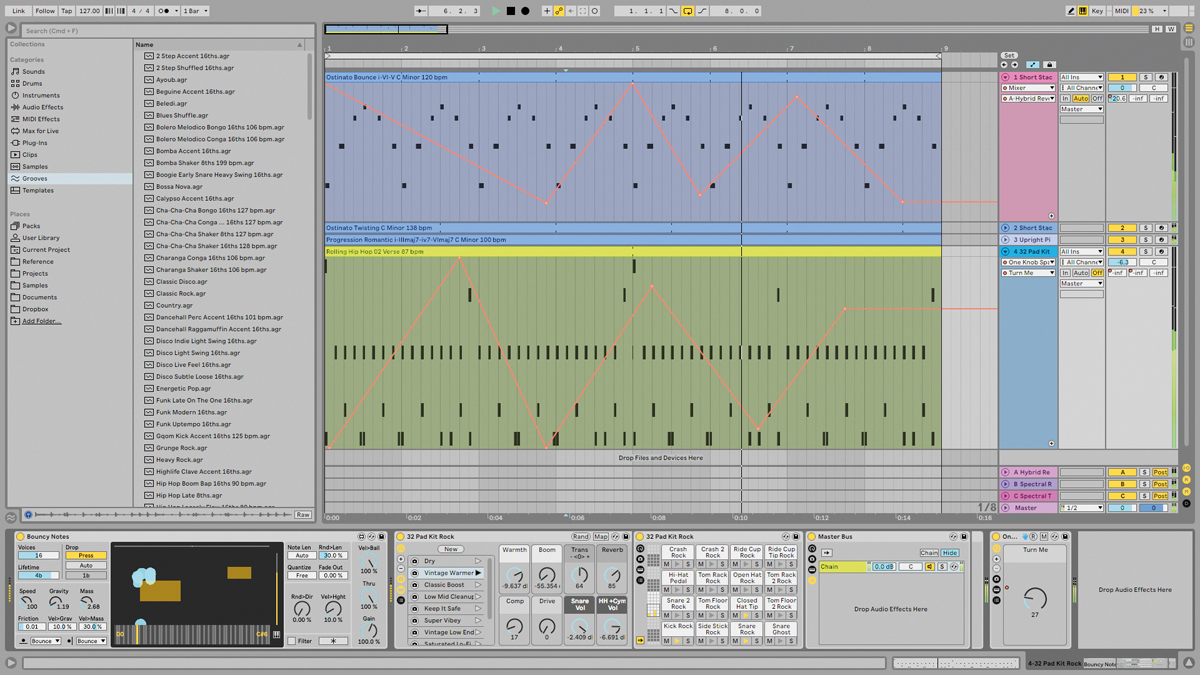MusicRadar Verdict
Not an essential upgrade for everyone, but Live 11’s new additions here have been smartly implemented. It retains its place at the cutting edge of DAW technology.
Pros
- +
Comping and track linking features are well executed.
- +
MPE is a bonus for the advanced user.
- +
New instruments and effects in the Suite edition.
- +
Adds a bunch of new features without bloating the package as a whole.
Cons
- -
Not as essential an update as the last few versions.
- -
Plugin delay compensation is still an issue for a few of the effects.
MusicRadar's got your back
What is it?
Ableton has a long-held tradition of incrementally improving its DAW rather than radically altering it. Live 11, in that vein, features a large number of changes and improvements.
These can be broadly split into three categories: enhanced tracking capabilities, new tools that will be primarily useful in a live performance context, and upgrades to Live’s existing sound generation, processing and sequencing capabilities.
The Suite edition of Live 11 includes four main new effects: PitchLoop89 (a pitchshifting effect inspired by an obscure, primitive digital pitch-shifter, the Publison DHM 89 B2), Hybrid Reverb (a dual algorithmic and convolution reverb suitable for both standard and sound design-esque reverbs), and Spectral Resonator and Spectral Time (which respectively create resonant comb filter-like and granular delay-style effects).
Also included with the Live 11 Suite are three new great-sounding instruments that were created in collaboration with Spitfire Audio (Upright Piano, Brass Quartet and String Quartet), three new sound packs (Voice Box, Mood Reel and Drone Lab), and six ‘Inspired by Nature’ chance-based instrument and effects.
These don’t feel as substantial as previous, meatier additions to Live such as 10’s Wavetable and Echo, but they are of a decent enough quality and their quirky nature makes them complementary to 11’s chance-based features.
What’s more, certain existing effects have been given substantial upgrades: Redux and Chorus are now much more full-featured, and Phaser and Flanger have been integrated into a single more powerful effect much like Simple Delay and Ping Pong Delay were in the Live 10 update.
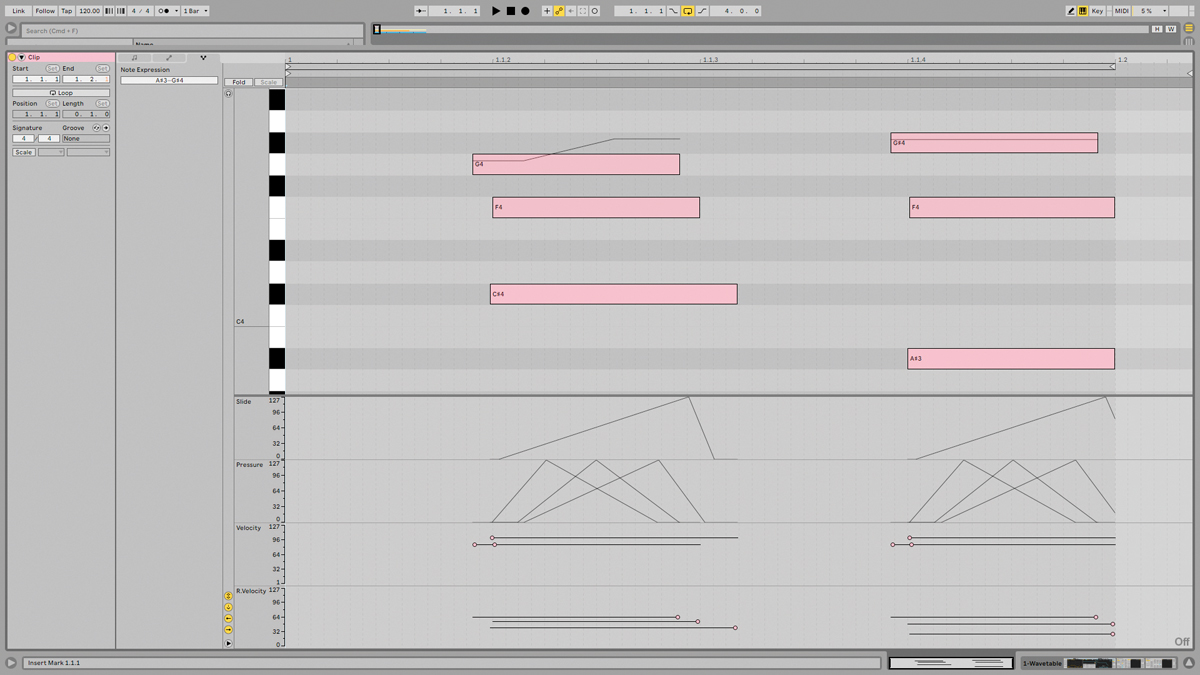
Live now features support for MIDI Polyphonic Expression (MPE) for more nuanced control over compatible instruments. MPE makes it possible to pitchbend individual notes, plus there are now individual Slide and Pressure parameters for use as modulation sources with discrete values for each note.
MPE also features release velocity, which works much like the familiar ‘attack’ velocity, but applied to the end of notes. MPE can be used without a compatible hardware controller, and can be programmed directly into the new Expressions tab next to the Notes and Envelopes tabs in the MIDI clip editor. It also makes polyphonic aftertouch available on Live’s Push devices.
Performance and verdict
For those who use Live to track MIDI and audio performances, the new comping and linked track capabilities will be the most exciting addition. Comping works in a straightforward manner: record audio or MIDI over a looped section of the project and the data will still be recorded to a single clip, but each cycle will be placed on a new take lane. Take lanes can be viewed by right-clicking on a track header and selecting Show Take Lanes, and they’re displayed under the main lane in a fashion similar to multiple automation lanes.
To comp the recorded material one selects the desired section of a track lane, and presses the enter key to place it on the main lane. Alternatively, draw mode can be used - just drag over part of a clip and it will be placed on the main lane. It’s an easy-to-use solution to a long-requested feature that will no doubt delight those eagerly awaiting it.
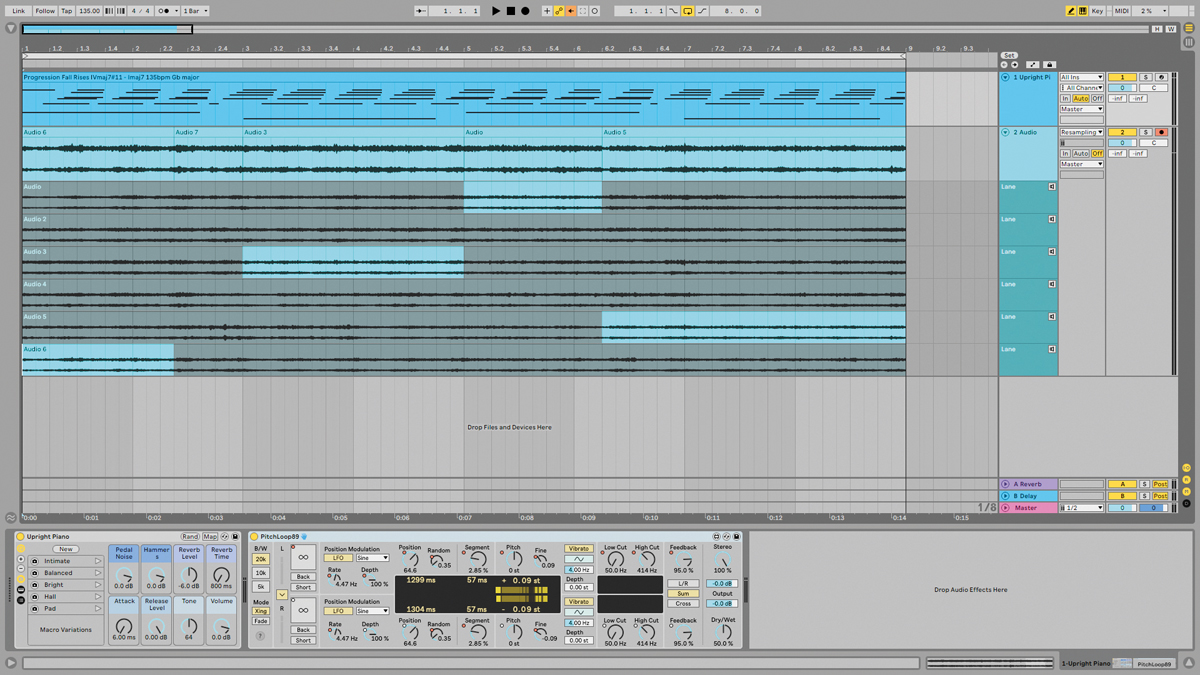
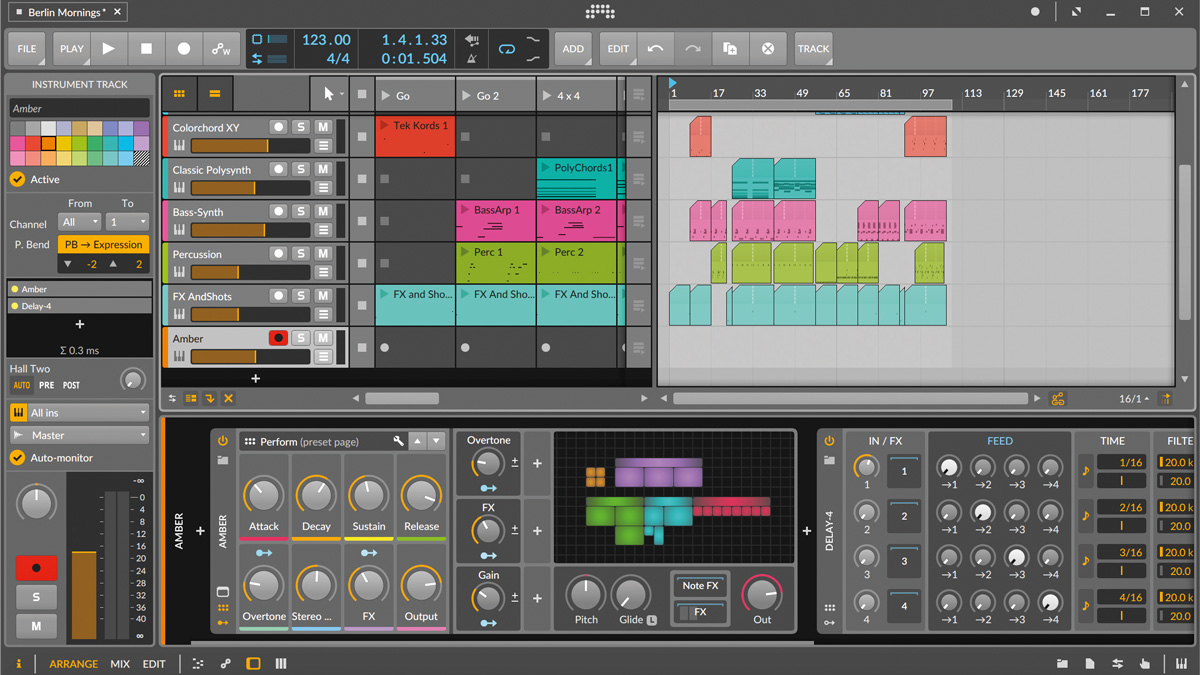
• Bitwig Studio 3
Live’s closest rival is a DAW with a similar interface, plus powerful audio and modulation routing capabilities. It also includes The Grid, a supremely powerful modular environment for creating your own effects, instruments and more.
• Steinberg Cubase Pro 11
The original MPE DAW, this has been around since the late ’80s yet remains on the cutting edge of music production. For advanced MIDI and audio editing it’s hard to beat, though it doesn’t offer the performance capabilities of Live.
• Apple Logic Pro
Only available for Mac and its workflow isn’t as streamlined as Live’s, but it does offer features ideal for live performers.
Linked tracks work in a similarly unfussy fashion. To link tracks, one selects multiple tracks, right-clicks one of their track headers and selects “Link Tracks”. When tracks are linked, selections made on one of the tracks will be reflected on the others, making it possible to edit audio on multiple tracks at once.
This is useful when working with multiple copies or related versions of the same material, and will likely prove invaluable to those dealing with multi-track vocal and drum recordings, but its functionality is limited to affecting clips at the same time position.
For example, you can adjust the relative fade time of two clips that play at the same time on different tracks, but you still can’t adjust the fade times of multiple clips on the same track simultaneously.
Still, a powerful feature, and one that can be used in conjunction with track lanes, making it possible to quickly create and edit complex multitrack layers. It even works with warping, making it easy to time-correct multi-track elements.
Live performance-wise, Live now has the ability to select an audio input channel and use it to control Live’s internal tempo. This is simple to set up; just select an audio input channel in Live’s Preferences > Link/Tempo/MIDI panel, then set the Show Tempo Follower Toggle to Show and a ‘Follow’ button will appear to the left of the familiar ‘Tap’ button at the top left-hand corner of Live’s interface. Activate this and Live will analyse the audio input and adjust the project tempo accordingly.
We had mixed results attempting to have Live follow along to various recordings and live audio inputs, so it feels like this feature isn’t quite ready for prime-time just yet.
New additions for the live performer include new follow action capabilities: follow actions can now be linked to a clip’s length, scenes can now have follow actions, and there’s a new follow action, Jump, that lets you jump to a specific clip. There’s also now an Enable Follow Actions Globally button that sits on the sessions view’s master track.
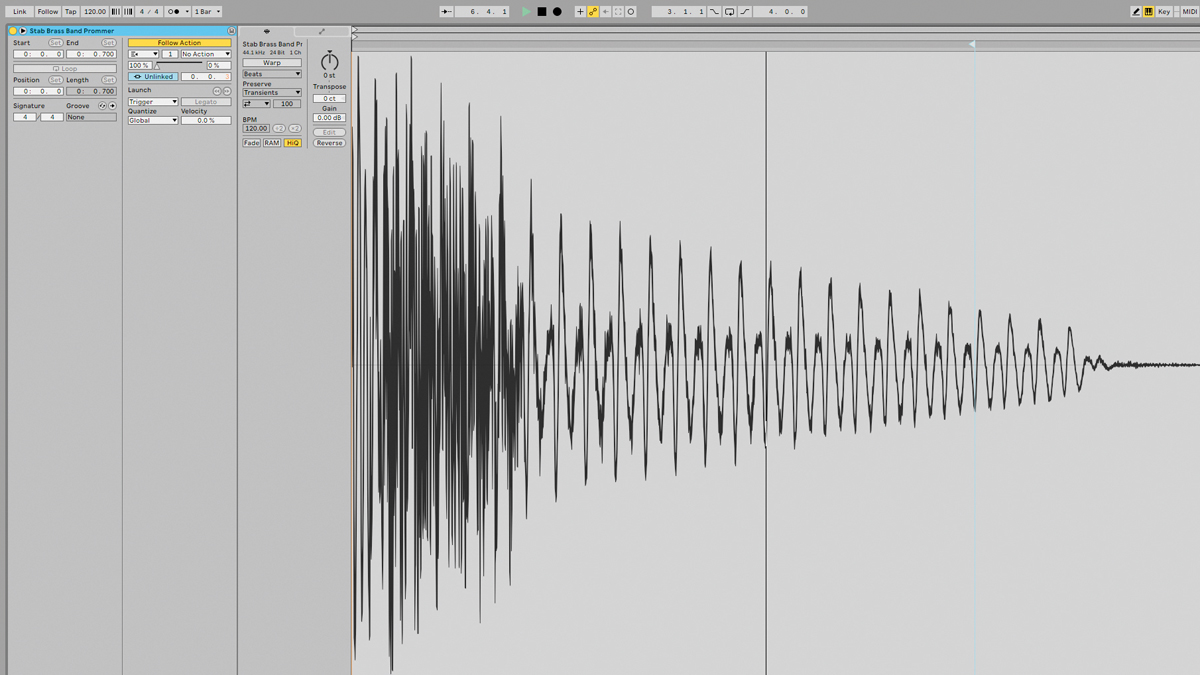
Another feature that could be useful in a live context is the introduction of a probability lane in the MIDI editor that controls the chance that a particular note will play. It’s also possible to set a range for a note’s velocity level that one could use to create a more natural-sounding performance when playing live.
Macros have also been given a shot in the arm with the ability to have between one and 16 macros in a rack, and macro snapshots now allow for the creation and recall of multiple setups which can even be randomised for sonic inspiration.
While some changes require a little getting used to for veterans (audio effects are now in folders which also include Max for Live modulators, and the MIDI and Audio clips views have been updated), Ableton has again managed to enhance Live’s capabilities without adding bloat to its famously streamlined workflow.
Sadly, Live’s quirk with plugin delay compensation is still in effect. This means transport-synced plugins such as Xfer Records LFO Tool and Cableguys Shaperbox become de-synced when placed after effects that introduce latency.
But this remains a fantastic DAW and live performance tool. If you’re a strictly in-the-box type, certain enhancements won’t be of interest, but for everyone else it’s a winner.
MusicRadar verdict: Not an essential upgrade for everyone, but Live 11’s new additions here have been smartly implemented. It retains its place at the cutting edge of DAW technology.
Hands-on demos
Elphnt
Beat Academy
Point Blank
Specifications
System requirements: OS X 10.13 or later or Windows 10 (Build 1909 and later), Intel Core i5 or AMD multi-core processor, 8GB RAM, Approximately 3 GB disk space on the system drive for the basic installation (8 GB free disk space recommended), up to 76 GB disk space for additionally available sound content
Other versions: Live 11 Intro and Live 11 Standard
“We’re still avoiding him to this day... we would just despise him after a while”: Flaming Lips' Wayne Coyne is not a Billy Corgan fan
“KIKI BOY 2025”: Frank Ocean appears to be teasing something... or other
“This is great. I knew I was getting to them! I’m so happy. It’s such a good feeling”: Spotify bites back at Kate Nash
